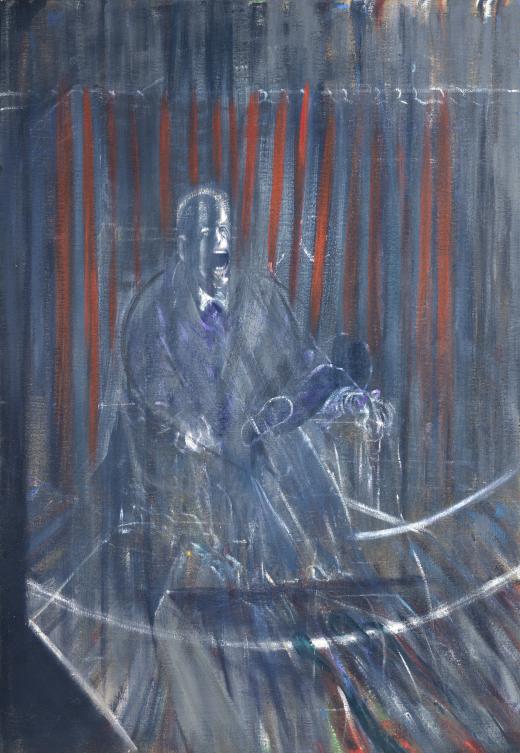ISOLATED FIGURES
“I think it is one of the greatest portraits that have been made, and I became obsessed by it. I buy book after book with this illustration in it of the Velázquez Pope, because it just haunts me, and it opens up all sorts of feelings and areas of […] imagination.”
Francis Bacon*
In the mid-1940’s, Francis Bacon discovered the image of Pope Innocent X through reproductions. Diego Velázquez painted this work in 1650, and it came to obsess not only Bacon but also other English painters and writers. For more than two decades, Bacon’s predilection for this painting was reflected in dozens of works in which the image of the pontiff is transformed in different ways. In some of them, it mingles with the suffering expressed by the decomposed face of the injured woman who appears screaming in Sergei Eisenstein’s film Battleship Potemkin, which Bacon had discovered in Berlin at the age of sixteen. In others, the figure is surrounded by butchered animal parts in clear allusion to Chaïm Soutine, a French painter of Belarusian Jewish origin. And in yet others, the image of Innocent X overlaps that of Pius XII, the Pope during World War II whose diplomatic relations with Nazi Germany still spark controversy today.
Velázquez painted his Pope with no context to help identify his high station—he depicts the figure alone, just like Christ sacrificed on the cross. The crucifixion is another theme that Bacon had revisited time and time again since the beginning of his career, although without religious connotations and always with the intention of revealing the darkest side of the human condition. Just like his Popes, his Crucifixions undergo transformations, mutations in color, format, or composition, and they are interspersed with other references that captivated the artist, such as Picasso’s works and Aeschylus’s Oresteia.
* David Sylvester, The Brutality of Fact: Interviews with Francis Bacon 1962–1979, Interview 1 – 24:25

